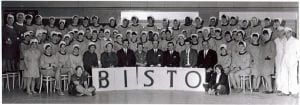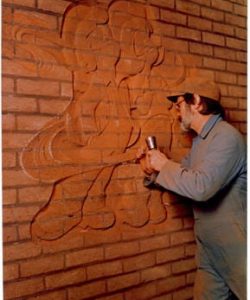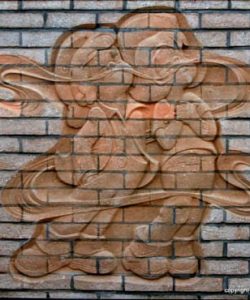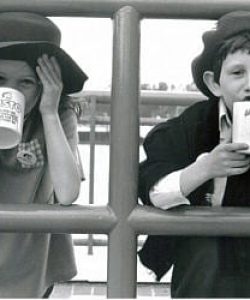THE LEGACY OF CANAL & SALT
THE BISTO KIDS
In this section we look at how the old canal and salt works are still with us and where you can still see evidence of those times past. As more information becomes available it will be added and we are starting with…
The RHM factory was important to the Middlewich people. It had been Cerebos and Middlewich Salt before that making the site over 100 years old and saw many generations of families, being employed or enjoying the many social events the company provided.
Middlewich was relaunched in the sixties as the primary site of the new and modern RHM Company; Prince Philip had an official visit here in 1969. Many women were employed in the Bisto section of the factory, the laboratory invented Bisto Granules, and Saxa Salt and Sifta Sam were packaged here. The company had a vacuum plant until the early seventies when it became more cost effective to be supplied by neighbours and business associates British Salt, who is now our only salt company left.
One of the social aspects was the Bisto kids look-alike competition, this was a national event at one point raising money for Children’s charities, (NCH), the overall winner got to meet either the Queen or Princess Margaret, very much the highlight of the year!
The closure of the factory was a blow to Middlewich and the generations of families who worked there. As heritage officer I’ve been collecting photographs and memorabilia of the site and the workers to preserve for future generations.
Premier foods allowed us to take the last photographs of the factory just before it closed in 2008. It was then that I and my colleague Dave Thompson saw the Bisto Kids on the reception wall, upon enquiring about the sculpture it turned out that it was scheduled for demolition! Premier Foods were contacted and they realised its importance for our community to save it, so they donated the sculpture to the town if we could pay for its removal. Thankfully local builder John Wickham and his associate Rob Moreton were very keen to help us save the Bisto Kids and so we embarked on a perilous journey of removing the Bisto kids from the RHM building and finally placing it in Middlewich Library for display.
It was certainly a town effort, although by the time we had got men in place and money, the site changed hands from Premier Foods to Bovale, so we had to start permission hunting to remove the Bisto kids for the second time! Bovale agreed to let us take the sculpture and paid for its removal and the Town Council paid to stabilise it and place a supporting frame around it.
The hard work paid off once we launched the sculpture, the public response was fantastic and our Youth Theatre did a drama piece on the Bisto Kids for the Folk and Boat Festival whee we put the Bisto Kids on display for the first time. We heard a lot of people’s stories about the Bisto Factory and many remembered the Kids with affection.
The Bisto Kids are now in their new home in Middlewich Library and they are well worth seeing, the last remains of over 100 years of salt and food production.
Kerry Kirwan
TAKE A JOURNEY THROUGH TIME
The Tales of Wych and Water is derived from the Canal and Salt Town Middlewich project aimed at celebrating the Canal and Salt heritage of the town, concentrating on the historic changes and relationship between the canal, the salt industries and the community.
Middlewich has been famous for the production of salt since Roman times, an industry which probably started here during the Iron Age. The brine pits and saltworks were part of the settlement along King Street, but during the medieval period most works were located at Newton.
Pre-industrial saltworks were family businesses where brine was boiled in lead vats within timber and wickerwalled sheds. Two brine-pits, “Louseath” & “Newseath”, supplied more than 100 “wych-houses” and production was highly regulated. The industrial revolution introduced technological change, such as coal as a fuel and iron for the boiling pans, as well as steam pumps for drawing brine from the below-ground “wet” rockhead.
The number of saltworks operating in any one period was reduced to around five, and these often changed hands. In fact the same locations were largely reused over several centuries. Various grades of salt were produced, much of it for preserving food, but it was also used in tanning, dying and clothing manufacture. In the 19th and 20th centuries, chemical uses became more important, such as production of ammonia, alkali and bleach. Social conditions for the work force were hard, and the impact of the salt and chemical works on the local environment at Middlewich resulted in great pollution and health problems.
The 1760’s were pivotal for canal building. The Earl of Bridgewater’s canal had showed the Captains of Industry that the canals offered a more effective way of transporting commodities across the country than by pack-horse and poorly maintained roads. For the next sixty years, and before the advent of the next transport revolution – the train; canals were constructed across most of industrial Britain, especially in those areas where heavy industry relied on the constant supply and distribution of raw materials such as iron ore, coal and in the case of Middlewich; salt. Sadly very few canals made any profit during their lifetime and were subjected to takeovers including consortiums that also had a stake in the railways. The railways had made a significant impact on the way goods and people were transported across Britain. However, the canal systems proved vital during the two World Wars.
The canal system around Middlewich has over the past 150 years been of major importance in transporting coal, dairy products and, of course salt. Although many of these industries have now either gone or goods are moved by road freight, canals have been given a new lease of life in the form of leisure and Middlewich is at the forefront of this new revolution. Investment from the leisure industry and the commitment of bodies such as British Waterways has reignited a new wave of canal users. Allied to this growing industry is a renewed interest in the heritage value of the canal system and this has been taken up with vigour by groups such as Middlewich Vision and the Middlewich Heritage Society.
PEOPLE'S GALLERY
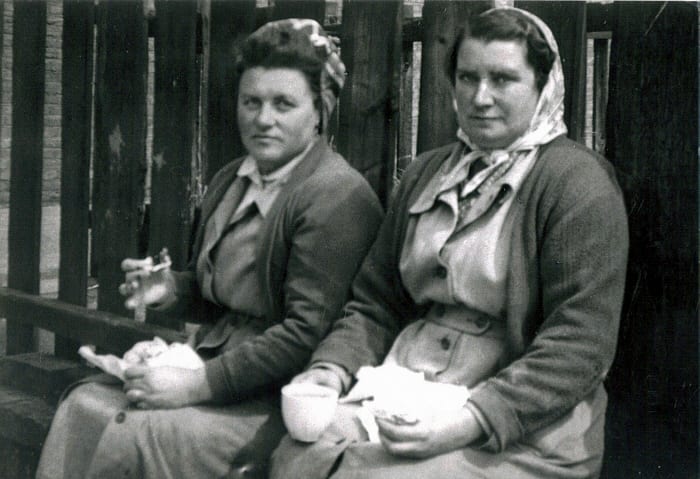
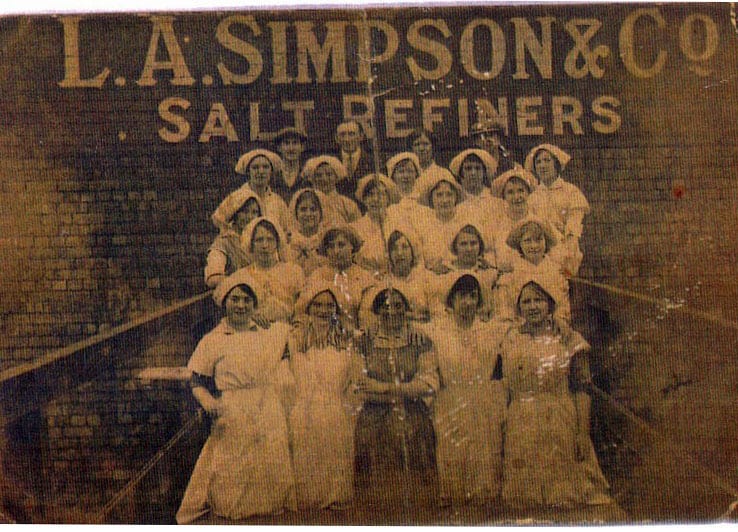
Transcripts of interviews with canal and salt workers
Barbara Astles
George Bourne
Albert Gallagher
Elizabeth Poole
George Poole
Maureen Shaw
Canals
Salt
The canal and salt project
The Open Pan Process
Illustrated (below) by photographs from Seddon’s and Murgatroyds Salt Works, Middlewich
- The salt making process starts with the brine being pumped up from underground brine streams; in the case of Murgatroyds, this was stored in the Brine Cistern above the Railway Wagon Repair Shop.
- The brine was then piped below ground and into the pans when required.
- Low grade coal called ‘slack,’ was used to fire the pans, the heat passed through the brick flue system that runs under the pan. The flues enable a pan to be heated evenly; the excess heat goes through the hot-house area before it reaches the chimney.
- The salt crystals form or ‘set’ on the surface of the brine before sinking to the bottom of the pan.
- The fiercer the burn, the finer the grade of salt crystals, there were fine salt pans and common pans, the latter produced coarser salt for other industries to use. Seddon’s also produced large salt crystals known as ‘Lagos’ Salt, it was used as money in a province of Africa.
- The ‘lumpmen’ would draw the pan with a ‘long handled rake’ (up to 3.5 metres), bringing the salt towards him. Using a skimmer the salt was then scooped and placed in ‘elm tubs’ on the rail known as ‘dogs’. The cooling process begins and the excess brine drains back into the pan.
- The salt was packed down with a wooden tool called a ‘mundling stick’; this ensures the lump is compacted to produce the correct weight. When the salt lump was drained, they were placed on the hurdles, (wooden floor), either side of the pan until two rows had been formed.
- Some blocks were sold as lump salt so they were finished off with a happer, a flat wooden tool used to smooth off the lump. Otherwise it would be left rough and end up in the crusher.
- The lumps were turned out, loaded onto lump barrows and taken to the hot house where they stand on end in the ditches between the flues. After four days they are laid flat on top of the flues for final storing. Lofters would use spikes to lift the lumps into the dry salt area, above the hot house where they waited to be crushed or cut into blocks.
- The working week was Monday to Saturday morning, the men worked 12 hour shifts in very hot conditions. Every Monday the pans had to be de-scaled as the build up of salt would retain heat and damage the iron plates. A jigger lifted the pan so that the pan and flues could be checked and repaired if necessary.
Based on the project photo archive, project research and the Murgatroyds Open-Pan Salt Works.
